PRESIDENT’S MESSAGE
The colours are here and Mary Lake is transformed from a picturesque landscape into a picturesque landscape with a kaleidoscope of colour. The beauty is truly remarkable, and the snow will soon cover the branches of trees that stretch to the ridgeline. Boats will be replaced by snowmachines and ice-huts will gather in little snowy villages in due time, reminding us that the lake is alive not just in summer but all year. This has been a busy year for the MLA, in particular with recent algae blooms on the lake. Rising to this challenge, the MLA has formed a new sub-committee: The Erosion and Water Levels Committee, chaired by our new VP: Ed Morgan. Additionally, the MLA Water Quality Committee has researched and plans to purchase the testing equipment to identify Cyanobacteria samples ourselves, aiding in proactively informing our members of blooms and tracking when and where they occur. Jill Perry and the Water Quality Committee have already been taking samples
and running programs for volunteers to contribute to monitoring the health of the lake and we look forward to where this initiative can take us.
As an organization, the Board continues to be an active member in the local community, sponsoring the annual Turkey Dinner and engaging with the town on plans for development on the north side of the lake, formerly Camp Mini-Yo-We’s “North Woods” site, and engaging with TownCouncil regarding plans for the Port Sydney waterfront, which have moved slowly and appear to have stalled at this point. We are always interested in gathering input from our Members on the relevant issues and welcome volunteers to keep the programs going.
The snow will soon settle upon the lake, pulling a blanket over the business of summer and the colours that we enjoy but for a short while.
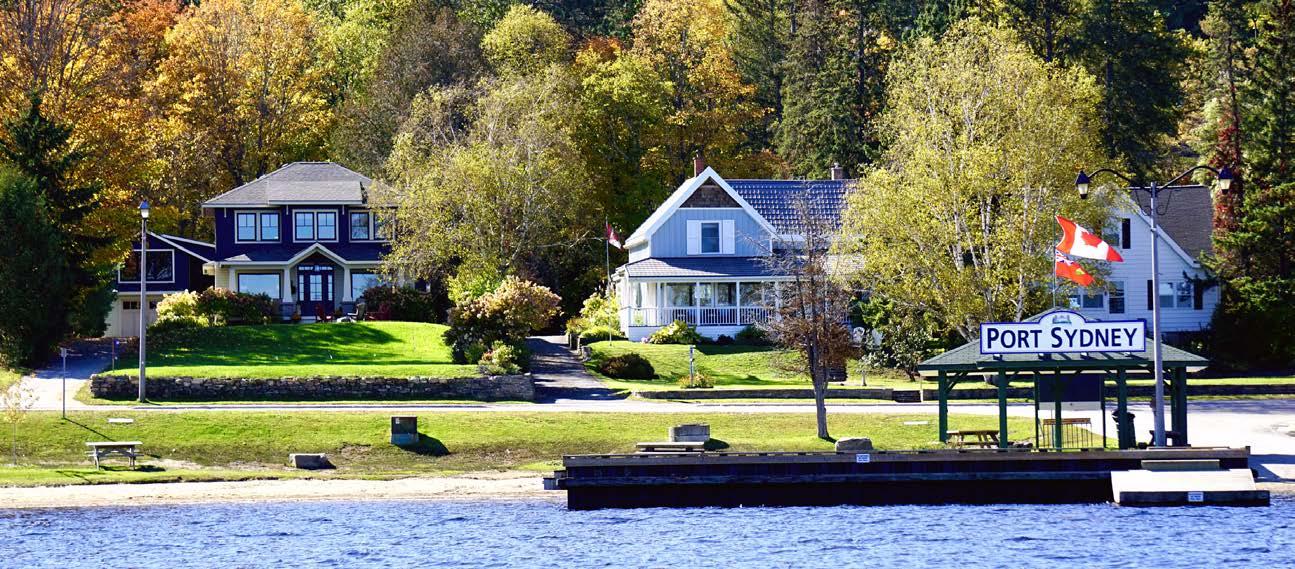
Sincerely, Josh Laverty
BOARD OF DIRECTORS
Executive
Josh Laverty

Linda Kangas
President
Vice President
Ed Morgan Vice President
Jill Perry Vice President
Jennifer Ancona Treasurer
Dave Lawson
Ted Johnson
Secretary
Water Levels
Jill Perry Water Quality
Monique Heemskerk Membership
Linda Kangas
Angus Laurie
Land Use Committee Water Quality Committee
Jill Perry
Nancy Laurie
Jill Perry
Jen McLellan
Earthy
Erosion & Water Levels
Ed Morgan
Ted Johnson
Newsletter Editor
Nancy Laurie
Jill Perry
Directors Without Portfolio Ryan Kidd John Hogg
............................
...................
...........................
......................
www.MaryLakeAssociation.org
Jane
Association Mary Lake
2022 Fall Newsletter
TO FALL 2022
The spring began auspiciously. Snowpack in Algonquin Park - the source of much of our runoff flood waterwas normally saturated, and we had no major climatic gyrations in April and early May. The ones we fear are several days of heavy rain or extreme heat, or worse, both together. In addition, it should be noted, the water never went over the top of the “typical” Mary Lake dock.
This facilitated a return to summer water levels about a month ahead of schedule.

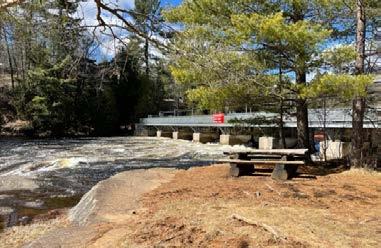
Throughout the summer the Ministry of Natural Resources and Forestry (MNRF) kept levels reasonably close to the agreed target, including during a prolonged hot spell in August when the level remained, surprisingly, about 10cm (4”) above target. Presumably this was intended to maintain a head of water for the four hydro power generating stations downstream. Things remained pleasantly close to target until roughly the third week of September, and then the wheels fell off. Between September 13 and October 1 the MNRF appears to have removed logs three times at the Port Sydney Dam, dropping the level some 24cm (10”) so that as of this writing in mid-October we continue to be about 10cm (4”) below the target agreed to between the MNRF and your Association in 2009, known as the Hatch Agreement.
We are concerned about this situation and have expressed our concerns once again to the occasionally responsive MNRF. Not only does the failure to maintain the proper level create serious difficulty for folks with shallow boat slips that may have silted up over the years, but also it exacerbates the effect of erosion on our predominate soft shoreline resulting in severe undercutting of lake and river banks. Anyone who has boated up to Huntsville lately will have seen the evidence: numerous trees, including some very old ones, leaning precipitously into the River.
It is this concern about erosion that has led the Board of the Mary Lake Association at its October 8 meeting to create a new three-member standing committee-the Erosion and Water Levels Committee- whose mandate is to advance the interests of the Association and its members in minimizing the impact of erosion while also seeking to have a constructive impact on water levels. The two matters are obviously closely intertwined. And readers have read ad nauseam our reminders that roughly two thirds of the lake shoreline and almost all of it from the Head of the Lake up to the Huntsville Locks is soft shoreline.
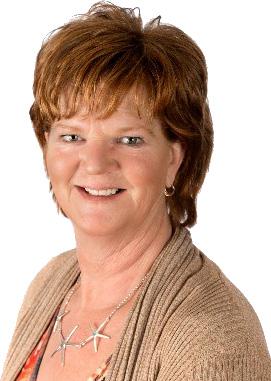 Ted Johnson
Ted Johnson
2
WATER LEVELS: SPRING
Monique Heemskerk Sales Representative 705-787-6594 Cell realestatemuskoka@gmail.com LAKES of MUSKOKA Realty
SHORELINE EROSION
Attention Mary Lake Association Members
This is of utmost importance to our lake and its natural environment.
Muskoka’s E-RODE Survey - NOW OPEN!
The Mary Lake Association is working hard to let the District of Muskoka know we have a serious problem with shoreline erosion from fluctuating water levels - but now we really need your help! Please take a few minutes to complete the District survey below...and do it repeatedly whenever and wherever you see erosion on the lake or in the river.
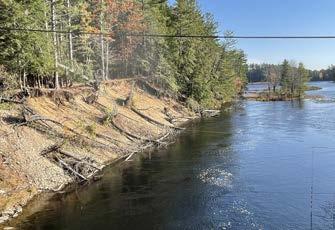

Examples of erosion due to the increased water level policy for Mary Lake (which began in 2006) include: Shoreline trees falling into the lake or the river because of bank softening or bank undercutting; disappearance of or reduction in long-established beaches; shoreline collapse or subsidence; other examples that you may have seen. The more valid incidents we can report, the more dots will show up on the survey map, and the greater likelihood we can draw attention to the plight of Mary Lake and the Muskoka River and their predominant and very vulnerable soft shoreline.
where it says ‘Click Here’... https://www.engagemuskoka.ca/integrated-watershed-management-home-page/ news_feed/muskoka-s-e-rode-survey-now-open
Click
Living in Cottage Country Handbook This simply amazing reference book should be at your fingertips for any questions you have about living in Cottage Country. It was written and produced through the Muskoka Watershed Council, the guardian angels of all our beautiful lakes. You will be impressed with the broad range of topics covered in its well organized 108 pages that are directed specifically to living in our region. The link below provides a list of sources where you can buy the book in person or order it online for delivery. At $20.00 it also makes a great gift for newcomers to Muskoka.
https://www.muskokawatershed.org/resources/handbook/
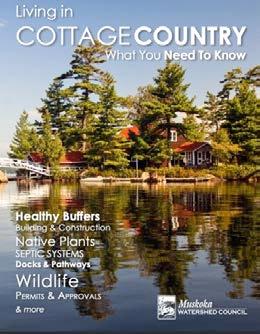
CLYFFE HOUSE RESORT
3
Family Vacations Since 1886 Dave Scott Owner/Manager www.clyffehouse.com dscott@clyffehouse.com 1-866-335-2236
on the link and the survey is at the bottom of the page
Handbook Cottage Watershed covered specifically to buy $20.00 it https://www.muskokawatershed.org/resources/handbook/
BOOK REVIEW
Severe erosion damage on the Muskoka River just south of the bridge in Port Sydney
so you are thinking about ‘going native’ on your Muskoka property!
You are making a wise choice. But what exactly is a native plant and why bother growing them?
Wikipedia describes native plants as “plants indigenous to a given area in geologic time. This includes plants that have developed, occur naturally, or existed for many years in an area.” They are important for increasing the biodiversity of Ontario bird, animal and insect life in your area by providing the right food and shelter. Planted along the shoreline, native plants help stabilize the shoreline preventing extensive erosion, and they help filter and absorb snow and water runoff from your property resulting in a reduction of pollution in our lakes and rivers. And for the gardener! they are easy to grow and less expensive to maintain as they adapt to local soil and other growing conditions without the addition of ‘better’ soil, fertilizers and an irrigation system.
Finding places to select and purchase the right Ontariogrown native plants has gotten easier since groups like Muskoka Conservancy, The Natural Edge and Love Your Lake through the Muskoka Watershed Council, as well as local magazine and newspaper and internet articles and YouTube videos are educating those of us with shoreline property of the urgent need for preserving our soft shorelines and protecting our lake water. As a spin off, this need has owners looking at the rest of their property as a home for selective native planting, reducing the need for the over-use but not necessarily the elimination of grass lawns and ornamental gardens and therefor the expense of irrigation systems, soil amenities and garden maintenance.
Many local nurseries like Lake of Bays Garden Centre lakeofbaysgardencentre.com and Brackenridge Nursery brackenrignursery.com offer a limited choice of native plants. Others like Sandhill and Windermere might be able to source them for you but natives are definitely not their specialty.
If you are looking to buy native plants at your local nursery, carefully read the name of the plant on the tag. You may find and have confirmed your choice is labelled a ‘native’ plant but it is actually a hybrid of that plant. A true native plant can be distinguished from a hybrid by the latin name on its label. The first two latin names show the plant’s genus and species. A third additional name, always in quotes, identifies the plant’s cultivar name. The cultivar name is a clear indication it is a hybrid. An example would be the native plant Echinacea purpurea as compared to its hybrid form of Echinacea purpurea ‘Avalanche’ - a plant that has been ‘created’ by growers. Using hybrids of native plants promotes the loss of the local native species and often lacks the biodiverse advantages for local insects, birds and animals.
Exclusive providers for native plants grown from seed for Ontario property owners have increased in numbers in the past few years. Most of these specialists will help you make choices, offer a plant catalogue and detailed information all online to help you select the right plant for the place you want it - sun, shade, wind, deer resistant, flowering, wet conditions, soil stabilization etc. Several offer native plant garden design services.
The next page has a list of some of these Ontario native plant growers. Check out their web site and look for the release date of their 2023 catalogue and order early to ensure you get the plants you want. Many growers are small in size and will mail your online catalogue selection to you. Others will provide on-site pickup of orders, and still others will be big enough to have in addition a shop on-site for you to select and buy plants.
Now that you have decided to ‘go native’, enjoy your winter of planning and ordering your selection of native Ontario grown garden plants and think of all the benefits that will enhance the enjoyment of your property.
4
Origin Native Plants
5420 Hwy 6 Guelph ON N1H 6J2
Ontario Native Plants
Flamborough ON (near Hamilton) address provided with pick up order
Native Plants in Claremont
4965 Westney Rd N Claremont ON L1Y 1A2
rwillison@muskokawatershed.org
email orderwill deliver plants within Huntsville area
originnativeplants.com info@originnativeplants.com phone: 519 760 0055
Hidden Habitat
2017 Southwood Rd, Kilworthy ON P0E 1G0
consulting design
discount on plants ordered through the NE
Native Plant Sale
Muskoka Conservancy 47 Quebec St, Bracebridge ON P1L 1T8
online cataloguewill ship within Ontarioorders starting Jan 2023
onplants.ca office@onplants.ca
online orders ship within ON pickup orders for 24+ plants only
wild flowers, ferns, grasses, trees, shrubs
extensive catalogue
Dec ’22 release of plant list
Orders March 1, 2023
https://www.nativeplants.ca info@nativeplants.ca 416 888 3363
nursery open Tues-Sat 10-3:30 until Oct 8
consulting $85 design $300 online catalogue ships within ON seed-grown native wildflowers, grasses, shrubs
hiddenhabitat.ca info@hiddenhabitat.ca 705 828 6313
nursery open by chance or appointment
consulting online catalogue ships within ON seeds, plants, shrubs
https://www.muskokaconservancy.org/nativeplant-program 705 645 7393
join Muskoka Conservancy on Facebook to get notice of their annual native plant sale
Lacewing Plants & Seedlings lacewing.ca info@lacewing.ca 705 441 0469
plants available online and at Sideroad Farm & Fiddlehead Nursery in Grey County
online catalogue ships within ON seed-grown native wildflowers, grasses, shrubs
specializes in: pollinator gardens: plants, consulting design
5
Rebecca Willison from the Natural Edge
OH NO! The Geese are Back! and other shoreline issues on Mary Lake
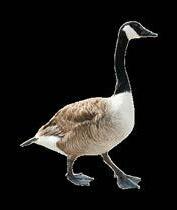

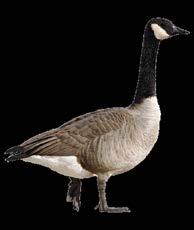
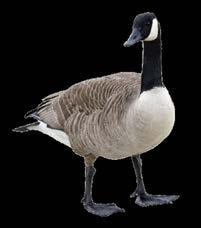
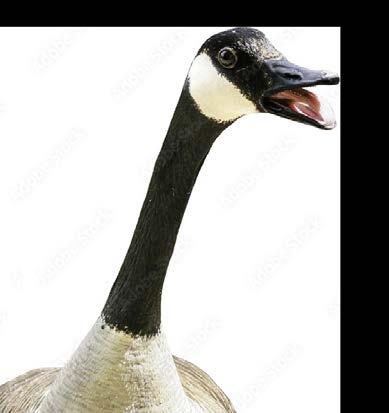
About sixty percent of Mary Lake and ninety percent of North Muskoka River Shoreline from the lake head to the locks is categorized as soft and vulnerable to erosion. Causes for this erosion include high water levels, wakeboard boat waves initiated within 300 ft of the shoreline, and hillside runoff.
One Mary Lake property owner is determined to control this cyclical shoreline erosion damage andBONUS! - keep the geese off her property by planting a natural garden of selected native plant species along this vulnerable water’s edge.
The shoreline edge of Sue Tovee’s property lies at the bottom of a steep hill that funnels rain and snowmelt run-off from Muskoka Road 10. Rain storms bring with them a multitude of gushing mini-streams of water that pour down the hill into Mary Lake and with it goes the soil from the grass lawn that she has along the shoreline. This water’s edge area is also subject to the annual Spring freshet floods furthering the erosion. To add to the problem, the easy access from the water makes her lawn a desirable place for Canada Geese to gather for meals.
Sue reached out to get ideas and support from the new Natural Edge program that the Mary Lake Association Board had introduced to its members this past Spring. The Muskoka Watershed Council had initiated the program to help educate lake and river property owners about saving their shoreline and to help maintain lake health.
There was a strong response by owners to the initial assessment of shoreline properties. One hundred and thirty-three reports were downloaded and 11 hardcopies of these were mailed out to owners at their request.
Owners could then carry on one step further and have a free site visit/consultation for suggestions as to what to plant in the area to stop or control the erosion. Owners could then choose to have a planting plan drawn up for the area and order up to 50 native plants to be delivered to the site, all for $300.00! This was a good deal and the design person, Rebecca Willison, a Watershed Planning Technician, is a very knowledgeable resource person.
The MLA Board, to further interest property owners in this excellent shoreline package, voted to proved the free consultation, design and plant package to two of our shoreline properties that had different shoreline conditions. In total nine owners have to date requested onsite property visits by Rebecca and one has gone ahead this fall with the planting package.
Sue’s property was chosen as a soft shore example for other MLA members to learn about planting for erosion control in low lying areas. Photos were taken during the initial site inspection and will continue to be taken to record the installation, development and effectiveness of this new buffer zone planting.
The following series of photos tells the personal story of Sue Tovee’s journey to naturalize her shoreline. Thank you Sue for generously sharing your shoreline garden project with all of us.
You can still participate in this program. Email: Rebecca Willison RWillison@muskokawatershed.org
Shoreline Rehab at Sue Tovee’s
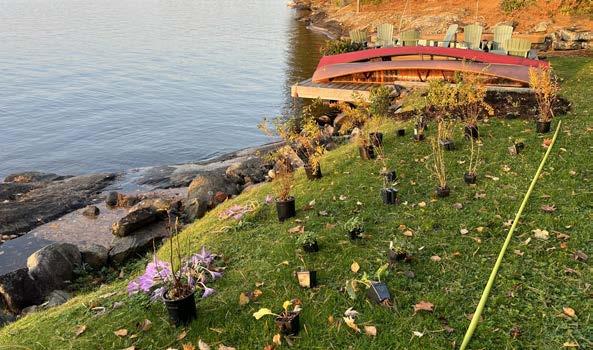
The first two photos show the site on the day the workshop was given. Consideration was given to access the water for swimming and moving a sailboat, canoe and paddle boards in and out of the water.
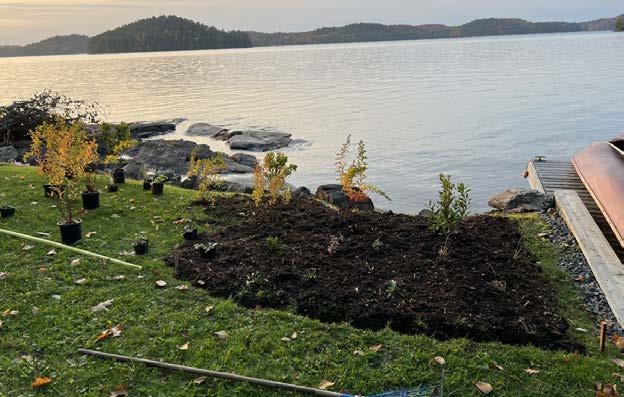
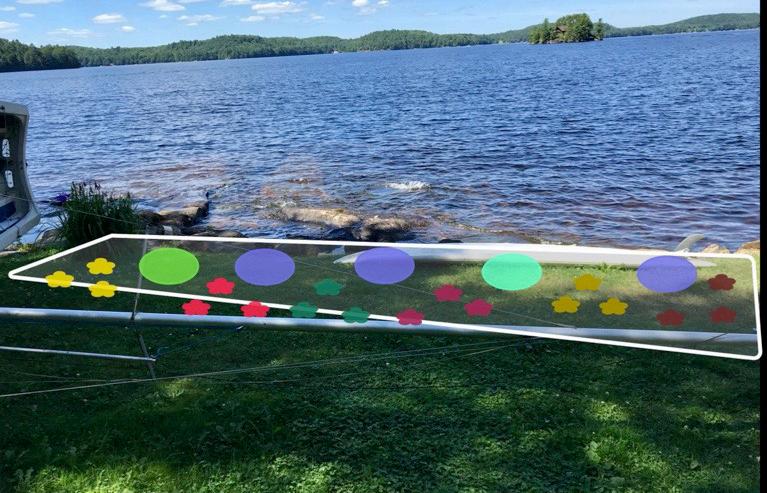
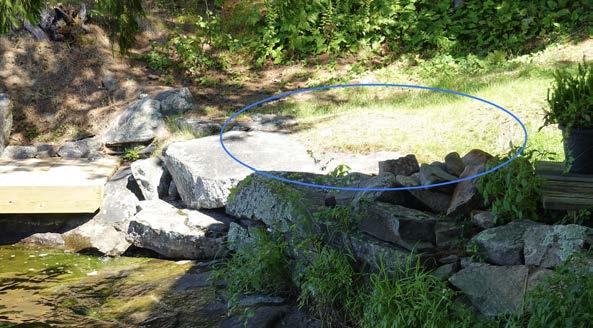
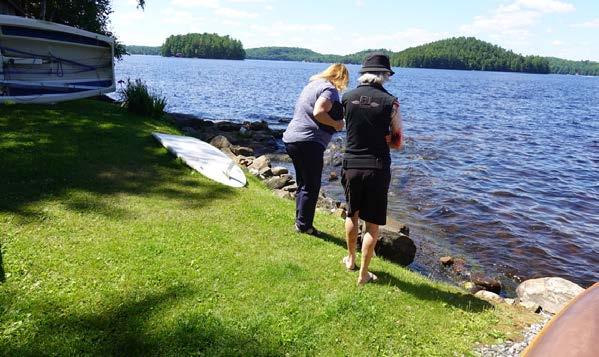
planting areas. Each coloured shape represents a specific plant choice and the number to be planted. This area will have nine different varieties for a total of twenty-three of the fifty chosen native plants on the list.
THE CHOSEN PLANTS are laid out as per the plan provided by “The Natural Edge”
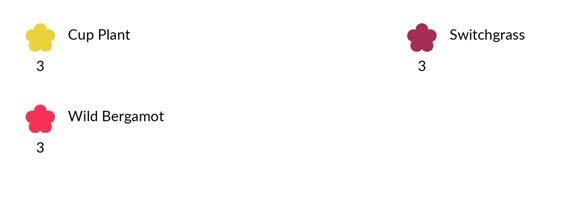
over the young roots just for this season for added insulation and to help hold the soil in place until the roots mature and spread
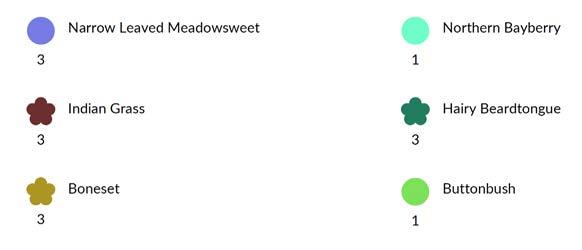
7
REBECCA FROM THE NATURAL EDGE Program and the owner discuss the type of plants that will best help retain the soil at the edge of the shoreline.
THE AREA MARKED ABOVE needs plants with a good root system that will hold the soil in place.
Early Settlers Around The Lake
THE COTTAGERS
In the years before the war, cottagers had begun to settle around the lake. In some cases people who had visited the lodges liked the area so much that they decided to buy their own piece of heaven. In other cases they were attracted by a sense of adventure or the stories that friends had told.
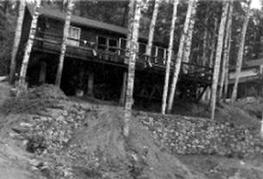
This excerpt is from “The Newcomers” written By Ryan Kidd and is available in local stores and from Trafford Publishing
summer the family would row to the locks and then walk to Huntsville for their major staples.
Shortly after the railroad was completed through to Huntsville in the 1880s a group of teachers came north from Stratford to spend their summer in Muskoka. Presumably they had heard stories of the Port Sydney area from Sydney Smith’s sister who lived in Stratford or from Sydney Smith himself who usually spent part of the winter there. Among the teachers were Frances and Emily Garden. They took the train to Huntsville and then took a steamer down the river to Mary Lake and thence to Mainhood’s Wharf. (later the site of Muskoka Lodge just east of Snowshoe Island)
They had rented the Rumball homestead just east of what is now known as Forrest Island for the summer. The house was called Springmount. Here the group can be seen at the house.
The original cottage seen here was built before WW1. A builder was brought from New England who saved space in the walls by putting in the 2x4’s crosswise. It had five bedrooms, a large kitchen, porch and a smaller living room. The interior had tongue and groove pine walls. It was quite advanced for the day with a water tower for water pumped up from the lake and an insulated cool room under the building for food. A couple of times a
Mel Clarke remembered being sent to drive a cab to Toronto to pick them up. Dorothy, the daughter, sat in the front and apparently thought a lot of Mel because she later remembered him in her will. Dorothy also caused a stir in the village because as was the fashion of the day, she liked to paddle her canoe out on to the lake and sunbathe in the nude. One day when the canoe floated into the dock at Clyffe house with her asleep in the bottom without clothes, a group of men working at the dock were left with a story that has been retold many times.
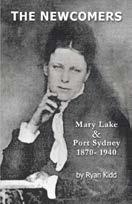
Jim Field bought the cottage and then passed it on to Gord Field. Despite efforts to make it more useable, Gord finally had to tear it down and build the present cottage in the 1970’s. Although it is much more heat efficient, Gord says that they missed the quiet shady veranda that was so much the style of the older buildings. selected the present site because the water was deep
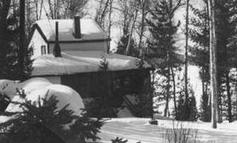
8 THE DORAN COTTAGE
and suitable for a dock. They came from near London where Jim Field owned a Knitting Mill. Alex Hughes was very appreciative when Jim would bring him a bale of socks each summer. The cottage, built in the late thirties by Mel and Vic Clarke, was one of the first Halliday precut buildings. Of the various additions, the one that is the most striking is the stone fireplace built by Jim Smith. Jim was a fine stonemason and is responsible for a lot of beautiful stonework in Muskoka. His work can be seen in the walls of his home at the east end of the village bridge. The dry stonewall behind the boathouse, as seen in this picture, was built by an old Polish man. He built the wall the same way that the Romans had built roads in his country. He said that the roads had stood for over a 1000 years and that was the only way to build walls.
The Fields continued the close association of the cottagers with Clyffe House. Al Field who succeeded his dad as owner of the cottage played baseball as pitcher with the Clyffe House “Invincibles” against the Village Team and pitcher Mel Clarke in a series of titanic games over the years.
THE ANSELL COTTAGE
Just east of the Field cottage is the site of the Ansell Cottage. It has recently been torn down. It was originally owned by Miss Anderson and was purchased by the Ansell’s by 1927. It was likely built by the same builder from the States as the Doran cottage. Kay Ansell and her brother Ross were part of the life of the village and that of Clyffe House. Ross also played for the Invincible Baseball Team. Kay still visits the village at every opportunity.
The last cottage in this group was at the east end next to the site of Bell’s boathouse. John (Charlie) and Edna Woods were friends of the Fields and lived in the same town, Tavastock, where John worked at the Bank of Montreal. They first came up with the Fields to Port Sydney in the late 1930’s and stayed at Avon Lea, a boarding house across from the town dock.
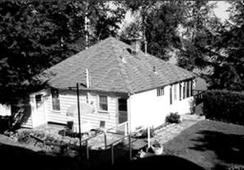
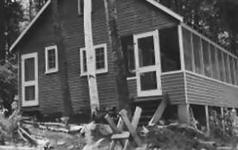
The Field boys and the handicapped son of the Woods spent many hours in the spring fishing for suckers off the town dock. After the Fields built, Charlie had his cottage constructed by the Clarkes in the mid forties. Mel Clarke remembered being assigned by his dad to make the doors and windows fit properly. Charlie had been a pilot and joined the Royal Air Force in WW 1. He was shot down over German territory and spent considerable time in a German prisoner of war camp. He carried shrapnel in his leg for the rest of his life. The Woods sold to the present owners, the Reeves in 1979.
To get an Historical tour of Mary Lake go to “Location and History” page on the MLA web site and then go down to “Take a tour of Mary Lake” Open it and there are the historical sketches and the maps are at the end of the article. You might want to take the tour by boat.
 Doran Field Ansell Woods
Doran Field Ansell Woods
9
THE WOODS COTTAGE
Membership

It is Thanksgiving weekend while I am writing this although by the time you are reading this, that turkey is long gone but I hope you made precious memories with your family and friends. Have you noticed the trees? how beautiful mother nature can be in Muskoka? the sun is shining and the colors are so vibrant that it must bring a smile on everyones face. Soon the colors are gone and we will be in a white world so enjoy every minute of it. As everything else these day in life (gas, interest rates, groceries) our membership count has increased too but in this case it is a good thing!
MEMBERSHIP UPDATE

Currently we are at 216 members, a jump from 203 last year this time. Lots of properties have changed hands and not all information is coming to us, so please, if you have a new neighbor - just tell them about the Mary Lake Association.
LOST AND FOUND
Our lost and found was very quiet this year, big storms will come and our list will grow but for now our list is small, you can always check this information: https://drive.google.com/drive/folders/1SPCnGf69_mNqdsln-1u7GoaJQtQA84Xj?usp=sharing

BULK PROPANE BUYING GROUP
Another benefit of being a member of our association is that you could be part of the Bulk Propane Buying Group (WHPBG) as liquid propane at the wholesale level in Canada 2020 to 2021 experienced wholesale propane commodities rising 210% on a year over year bases, every penny you can save to keep your house heated is much needed.
Currently the Superior set price is 0.70 p/L (+ hst/carbon tax) No delivery fees, no tank rental and starting this year, NO annual fee for the smart tank monitor. A minimum of 500 L must be used and membership has to be up to date in order to stay in this program, even if you only have a small propane fire-place it might make sense to use it during the summer as 500 liters x 0.70 is always cheaper than 400 liters market price. Officially the window to sign up has closed, IF you want to sign up for this program I might be able to crack open that window, only if there are multiple members interested, if you have any questions then please contact me.
From time to time you will receive our emails, please know that if you have any questions or concerns to drop us a line so our board can discuss these items at our board meetings, your input is important.
Monique Heemskerk Membership Director Mary Lake Association
10
Update
Huntsville, Bracebridge, Gravenhurst, Orillia, Barrie
DRAIN + DRY
THE LAW
Watercraft are a significant potential carrier of invasive species, and Ontario has introduced new regulations that allow us to better prevent and slow their destructive spread.
As of January 1, 2022, the Ontario Ministry of Northern Development, Mines, Natural Resources and Forestry has regulated the movement of watercraft (boats, canoes, kayaks, etc) under the Invasive Species Act. It is now illegal to place a boat, boating equipment or any vehicle or trailer into any body of water if there are any aquatic plants, animals or algae attached to it.
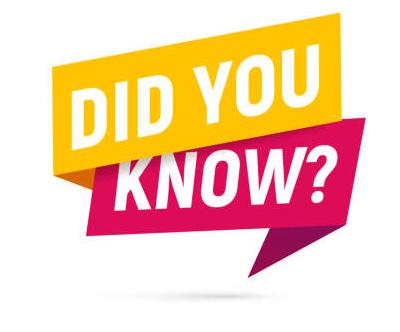
Before transporting a boat or boat equipment overland, boaters are now required to:
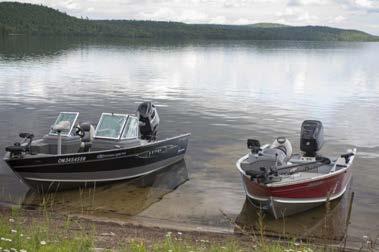
Remove or open drain plugs to allow water to drain from the boat or boat equipment.
reasonable precautions to remove all aquatic plants (weeds), animals and algae from any boat, boat equipment, vehicle or trailer.
reaching a launch site or
placing a watercraft in any body of water in Ontario, boaters are required to ensure their boat, boating equipment, vehicles or trailers are free of all
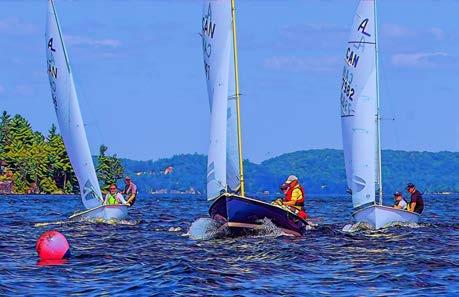
Aquatic plants
Animals
Algae
The Lake Association will be posting signage at the Port Sydney beach and several other launch sites around the lake to remind people of their responsibilities.
11
Take
Before
CLEAN +
IT’S
• Races are every Sat at 2:15 pm • After Party at 4:30 following races! • Meet New People on the Lake • Albacore boats available for use Email Sue Tovee serious_sue@hotmail.com PORTSYDN E Y YACHT CLUB Calling all SailorS! Port Sydney yaCht Club is Looking For New Sailing, Crew & Social Members! Why strong winds are needed for our lake? Cold, strong winds are a fairly frequent occurrence in Fall on Mary Lake, and a source of frustration for some of us as we attempt outdoor activities on the water. But those winds provide an important contribution to the health of the lake, and in particular to its fish population. By the end of summer the oxygen level of the lake water is relatively low, due to various processes including decay of vegetation and stagnation. The autumn winds stir the water and replenish much needed oxygen, and this in turn energizes fish that have been lurking in the depths and brings them closer to the surface. (explanation kindly provided by Ted Johnson)
Actual
of Algae Bloom at
• Blue-green algae or Cyanobacteria is a photosynthetic bacteria found naturally in water bodies worldwide. Most of the year we don’t notice it in our lake but they occur naturally all the time at the bottom eating the phosphorus from decaying plant material. With the right conditions they will rise to the surface where we see them as cyan or blue-green coloured slime in what is described as an algal bloom.
• This Cyanobacteria will sometimes produce Harmful Algal Blooms, aka HABS, and some of these HABS will produce Cyanotoxins, a bad taste survival tool to ward off predators like zooplankton but also toxic to humans and animals.
• The green muck is most noticeable along the shoreline but it can be throughout the deeper part of the lake too. The dead bacteria concentrated with Cyanotoxin can be floating anywhere and is especially noticeable when our lake currents take it out in masses over the Port Sydney rapids and into the South Muskoka River.
• The most common toxin this bacteria produces is Microcystis which is what we have in Mary Lake. This is the red flag that forces our local Health Unit to close our lake for recreational activities like swimming and as a source of drinking water used here by many cottagers.
Why does this bacteria grow in our lake?

• Late summer and fall the lake water surface can still be as warm as 25+º. These warm and calm water conditions are ideal for Cyanobacteria to rise to the
surface where their buoyancy allows them to feed on any nutrients that happen to be there. Even low nutrient lakes like Mary Lake will have algal blooms with this bacteria’s unique ability to float. The more the bacteria eat, the more they reproduce, the bigger the bloom gets.
• Stirring up the lake bottom brings more phosphorus to the surface where it feeds more algae. A big culprit is the Wakeboard boat that thrusts its forceful wave action deep into the lake depths if driven too close to shore.
• We are a lake of septic tanks and leaching beds, that if malfunctioning, are a well-known source of chemicals like phosphorus that will make their way into lake water.
• We are also a lake of soft shorelines subject to erosion that promotes the leaching of organic matter into the water.
So where is all of the food for the bacteria coming from? Cyanobacteria blooms are accelerated by:
• worldwide rise in temperatures, a favourable condition that increases the number of areas in the lake were blooms can happen.
• use of lawn and garden fertilizer and manure run-off from agricultural fields.
• heavier and more frequent rains leading to more run-off and erosion issues.
• human activities including the use of septic systems, cleaning supplies, vehicles, pet waste, and landscape stripping that eliminate the natural plant buffers and ecosystems.
12
What is that green slime by our dock!?!
photo
Port Sydney Beach Oct 6th 2021
Why should I be concerned about the infrequent blue-green bloom at my end of the lake?
• First and foremost it can make you sick. Along with other symptoms, the bacteria at its worst can cause liver and kidney damage in both humans and animals.
• It spoils the look and use of the lake.
• You, your family, and pets must not swim in the lake.
• You cannot drink the water or use it for cooking.
• And it looks disgusting.
How can we get rid of it?
• We can’t! It is natural. BUT we can stop promoting its growth by changing our habits and reduce or eliminate the causes that increase the food supply to this bacteria.
• Research! Only a few countries have organized studies of blue-green algae. The US has been working on the problem since the 1990’s with the shocking Cyanobacteria growth in Lake Erie. Since then, their research and testing has expanded under the Federal Government to all water bodies in the the US. This is very important to note as Canadian Federal, Provincial and Municipal governing bodies have been independently looking at the problem in an uncoordinated testing and reporting fashion. Recently though, they are becoming more focused on this environmental issue as macroscopic rather than a
local aberration. Bloom locations are being recorded and tested and data is being extrapolated and shared within geographic areas. The conditions of the issue need to be understood scientifically before a plan can be made and initiated. Blue-green algae blooms are a long-haul worldwide problem. But things are revving up worldwide as the threat to our health, economy, and the very survival of the planet becomes more apparent with time.
Solutions:
• Worldwide recognition is happening but more scientific research results using comparable methodology need to be shared among nations.
• Commercial companies are coming out with ways and means to help control the growth of Cyanobacteria using aeration and other interference techniques. These important controls do not stop the causes which if reduced will eliminate the need for the mitigation methods.
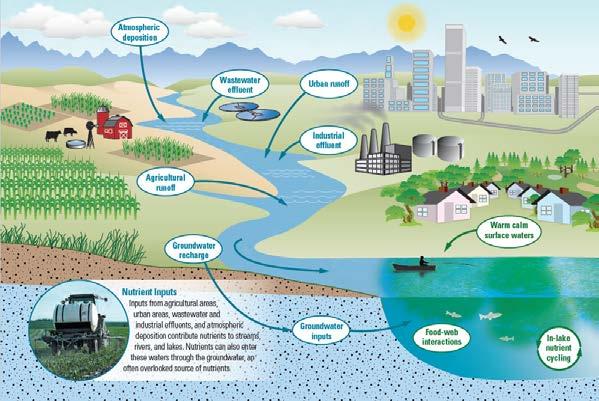
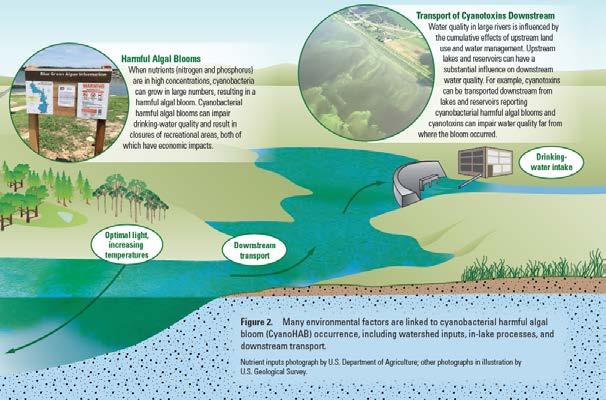
• Regulations have been established for some industries but more public awareness, monitoring, and regulations are needed.
• Recognition of these blooms as a major problem has increased through activist groups, public complaints, newspaper articles, and government supported notfor-profit interest groups like the Muskoka Watershed Council.
13
Continued on the next page (source: U”S Geological Survey Open file Report 2016-17)
What can we do as individuals here at the lake:
• Learn how to live with a septic system and keep it in good working order.
• In the zone between your cottage and the shore, never fertilize your lawn and remove water sprinklers. These simply push the nutrients into the lake.
• Create a buffer zone of native plants along your shoreline to reduce leaching of phosphorus and nitrogen.
• Report any sightings of Cyanobacteria blooms. Call the Pollution Hotline 1-866-663-8477 or the local Health Connection at 705-721-7520 and jillperry@live.ca
• Keep vehicles away from the shoreline. Nitrogen is created with engine ignition, and oil and gasoline leaks can leach into the water.
• Replace most if not all of your grass lawn with native plants to support the return of our natural ecosystems.
• Support our local and provincial volunteer and professional groups that are working to understand and find solutions to control further growth of the Cyanobacteria threat in our lake.
• Responsibly launch and operate motorized water craft. never use ‘wakeboard mode’ for regular travel, but only for boarding.
What is the MLA doing?
PARTICIPATING IN THE ALGAE MONITORING PROGRAM ... by sampling the lake water in 4 locations, every two weeks, for the presence of Blue Green Algae; performing the sample analysis and uploading the data to the District web site.
PURCHASING THE TESTING KIT (FLUOROMETER)... to enable the MLA Water Quality Committee to analyze for the presence of algae in real time.
RECORDING VISUAL ALGAE OUTBREAKS... made my MLA members.
CONDUCTING WATER QUALITY SAMPLING... Bugs in the Mud (benthic organisms), Lake Partner Program (basic chemistry and clarity), iSample (invasive species).
PROMOTING THE NEXT STEPS OF LOVE YOUR LAKE... by helping members to engage in the Natural Edge program for shoreline restoration.
THE LAND USE PLANNING COMMITTEE... comments on zone changes around the lake, especially with a view to protecting water quality.
APPLYING FOR INCREASED... basic water testing via the Province.
THE GIFT OF GREAT TASTE!
Sugarbush Hill Maple Farm 2389 Muskoka Rd #10 Huntsville, On P1H 2J3 705-787-9787 info@sugarbushhill.com www.sugarbushhill.com
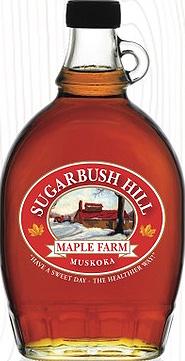
Stop in For a Maple Creemee Soft Ice Cream We Have Tubs to Take Home!
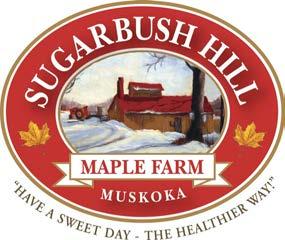
Have a great winter See you in the Spring





 Ted Johnson
Ted Johnson




















 Doran Field Ansell Woods
Doran Field Ansell Woods










